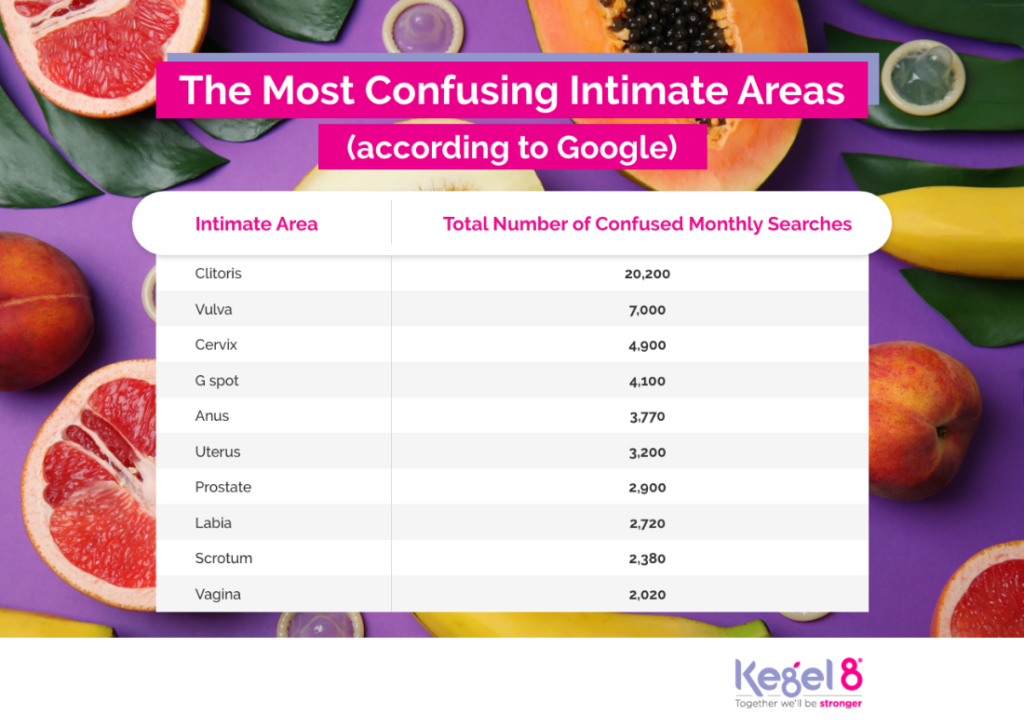The female anatomy is still baffling Brits, according to Google data

Thanks to the popularity of TV shows like Netflix’s ‘Sex Education’ and Channel 4’s ‘Naked Attraction’, intimate health and sex are front of mind after decades of being taboo. And never before has there been such a focus in mainstream media on the female anatomy and pleasure.
However, despite this positive change, a new study by intimate health company Kegel8 reveals Brits need better educating or a confidence boost when it comes to finding out what’s going on downstairs.
To find out what’s still baffling the public, Kegel8’s team of data analysts have looked at how many people are asking Dr Google about their own intimate body parts and those of the opposite sex. And the results may surprise you…
Clitoris-related questions, like “What is a clitoris” and “Where is the clitoris”, are the most-searched on Google – with 20,200 people in the UK looking for answers every month.
This is unsurprising, considering a survey by YouGov showed that a third of both men and women in the UK couldn’t locate the clitoris on a diagram.
The clitoris has long been shrouded in mystery. But while it may look small (located at the top of the vulva above the urethra), it’s actually a large wishbone-shaped structure that extends anywhere from 7 to 13 centimetres into your body and is key to female pleasure. That’s about equal to the average male penis when erect.
The second most-searched intimate body part in the UK is the female vulva. Monthly, there are 7,000 Googles for ‘what is’ and ‘where is the vulva’. The vulva may be confusing people as the terminology is used interchangeably (and inaccurately) with ‘vagina’. The vulva described the outer part of the female genitals – including the vaginal opening, labia majora, labia minora and the clitoris. The vagina, however, is the muscular tube inside, leading up to the cervix.
Speaking of cervix, cervix-related questions come in third place in the study, with just under 5,000 monthly search queries.
The cervix is nestled between the uterus and the vagina, creating a canal between them. It’s vital for keeping bacteria out of the uterus, producing self-cleaning discharge and changing position to facilitate menstruation, pregnancy and birth.
This important little part is what smear tests are examining, so the sheer amount of Google searches may be indicative that women remain unsure about cervical screenings.
In fourth and fifth place are unisex searches for the ‘G spot’ (4,100 searches) and the ‘anus’ (3,770).
The G spot – or Gräfenberg spot – is purely for pleasure. In women, it’s an area a few centimetres up inside the vagina on the side closest to the stomach and in men, it’s two inches or so inside the rectum.
Looking at male specific search queries, the prostate is the part of the intimate anatomy that baffles us the most – with “What is a prostate” and “Where is a prostate” being searched around 2,900 times a month in the UK.
It’s really important for men to know what their prostate is and how to know if it’s healthy, as over 40,000 new cases of prostate cancer are diagnosed in the UK every year.
The prostate is a small gland (about the size of a walnut) that sits below the bladder, in front of the rectum and surrounding the urethra. It makes some of the seminal fluid, so it’s pretty vital for reproduction.
Questions about the scrotum (2,380 monthly searches), foreskin (1,940), penis (1,620) and testicles (1,050) follow.




